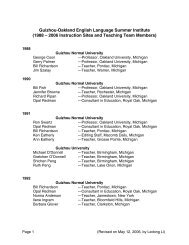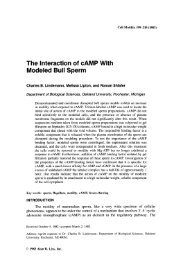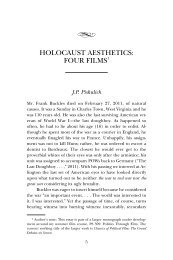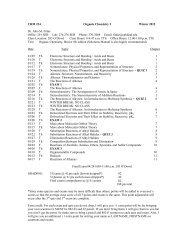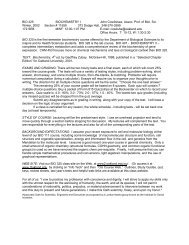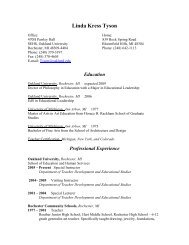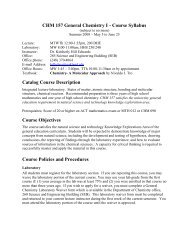Susan Wood, Saving a Haitian National Icon - Oakland University
Susan Wood, Saving a Haitian National Icon - Oakland University
Susan Wood, Saving a Haitian National Icon - Oakland University
Create successful ePaper yourself
Turn your PDF publications into a flip-book with our unique Google optimized e-Paper software.
in 1802, when Napoleon had sent his brother-in-law LeClerc to<br />
reconquer the rebellious island of Saint-Domingue (known<br />
today as Hispaniola). The sang melé officer Alexandre Pétion,<br />
faced with the decision to attack his own homeland, decided<br />
instead to defect from LeClerc’s expeditionary force and<br />
pledged his allegiance to the rebellion against France. 7 The<br />
other party to this oath was Jean-Jacques Dessalines, a Black officer<br />
and former slave. These two men had every reason to regard<br />
one another as mortal enemies since they had earlier<br />
faced one another in a bloodthirsty civil combat. After Toussaint<br />
L’Ouverture led the 1794–95 slave rebellion of Saint-<br />
Domingue that expelled the French and Spanish colonists, a<br />
struggle ensued for control of the island. The population’s loyalties<br />
were divided largely along ethnic lines with the former<br />
slaves supporting Toussaint while free people of mixed race<br />
followed his rival André Rigaud. Pétion served in Rigaud’s<br />
army and in 1799 commanded the defense of Jacmel.<br />
Dessalines, along with Henri Christophe, was one of the generals<br />
loyal to Toussaint who led attacks on southern Saint-<br />
Domingue. After the fall of Jacmel, Pétion escaped to France,<br />
but Dessalines brutally crushed the forces that Pétion had commanded.<br />
It was no small act of courage and faith, therefore, for<br />
both of these men later to make common cause with one another.<br />
Their alliance proved the turning point in Haiti’s struggle<br />
for independence. 8<br />
Lethière depicts the two men standing on a raised<br />
podium, facing one another but gazing upward toward the<br />
heavens while the broken shackles of slavery lie at their feet.<br />
Below them, gazing anxiously upward, are their fellow countrymen<br />
and women, one of whom holds up a small child to witness<br />
the historic moment. In the distance, we can see a battle<br />
still raging; the struggle for freedom is far from over. On the<br />
podium, a stele, engraved in gold letters with the opening<br />
words of the <strong>Haitian</strong> constitution, stands between the two men,<br />
forming the focus of their gestures, while above them, emerging<br />
from an aureole of light in the clouds, is God the Father,<br />
identified by an inscription in Hebrew above his head. The em-<br />
38


